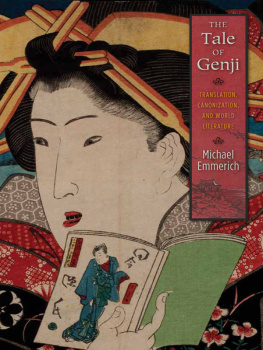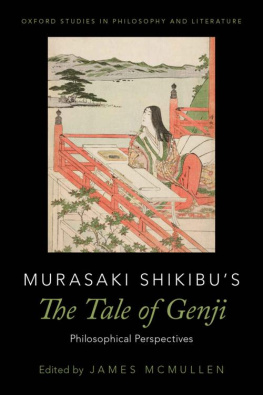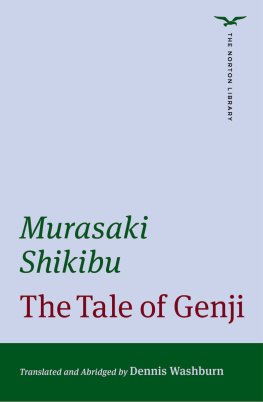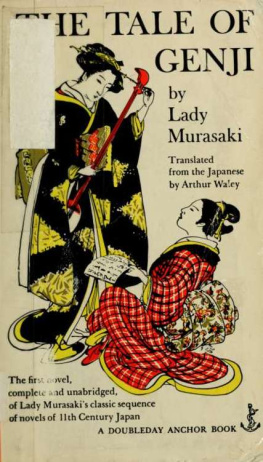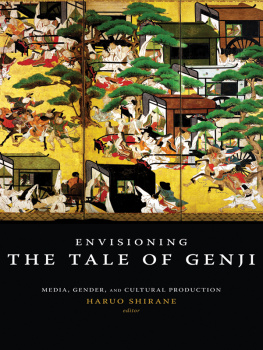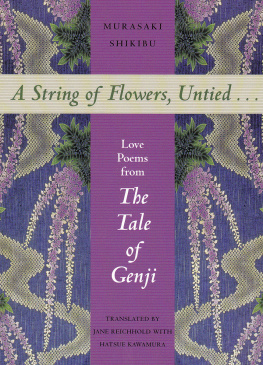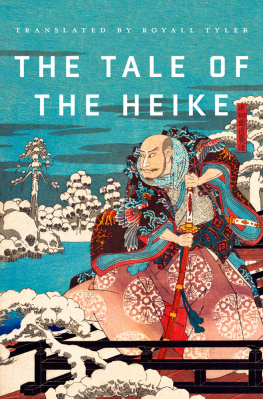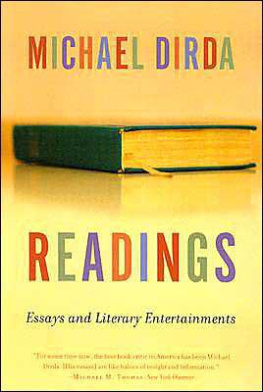THE TALE OF GENJI
THE Tale OF Genji
TRANSLATION, CANONIZATION, AND WORLD LITERATURE
Michael Emmerich
COLUMBIA UNIVERSITY PRESS
NEW YORK
Columbia University Press wishes to express its appreciation for assistance given by the Hellman Family Foundation and the Association for Asian Studies toward the cost of publishing this book.
Columbia University Press
Publishers Since 1893
New York Chichester, West Sussex
cup.columbia.edu
Copyright 2013 Columbia University Press
All rights reserved
E-ISBN 978-0-231-53442-0
Library of Congress Cataloging-in-Publication Data
Emmerich, Michael.
The Tale of Genji: translation, canonization, and world literature / Michael Emmerich.
pages cm
Includes bibliographical references and index.
ISBN 978-0-231-16272-2 (cloth: alk. paper)
ISBN 978-0-231-53442-0 (e-book)
1. Murasaki Shikibu, b. 978? Genji monogatari. 2. Japanese literatureHeian period, 7941185History and criticism. I. Title.
PL788.4.G43E45 2013
895.6'314dc22
2012048514
A Columbia University Press E-book.
CUP would be pleased to hear about your reading experience with this e-book at .
COVER IMAGE: (Main image) Utagawa Kunisada, The Courtesan Takigawa of the Kukimanjiya Reading Inaka Genji (Kukimanjiya nai Takigawa), uchiwa-e (fan print), 1838 (Publisher: Iseya Ichiemon) (from the Paulette and Jack Lantz Collection); (inset panel) unidentified artist, cover of [Murasaki Shikibu,] Genji Monogatari: The Most Celebrated of the Classical Japanese Romances, trans. Suyematz Kenchio (London: Trbner, 1882) (courtesy of the author)
COVER DESIGN: Milenda Nan Ok Lee
References to Internet Web sites (URLs) were accurate at the time of writing. Neither the author nor Columbia University Press is responsible for URLs that may have expired or changed since the manuscript was prepared.
Or maybe its that we do not live in the present,
which is the rock in the stream
that splits us as we flow around it.
James Richardson,
How Things Are: A Suite for Lucretians
Contents
Fourteen years of learning, crystallized in the pages of this study, means fourteen years of gratitude: I have more thanks to say than a second volume of equal heft could hold. That book would be redundant, however, since this onethe product of innumerable debtsis also my best attempt to repay them. Appreciation infuses every word. These acknowledgments are a partial, inadequate index.
Eleven years after I first struggled to read his smudged scribbles on an essay about Suematsu Kenchs Genji Monogatari, Haruo Shirane continues to be more generous, caring, and prudent than the best adviser or mentor I could have imagined. Tomi Suzuki and Paul Anderer were patient and strict throughout my years at Columbia University, and have been unfailingly supportive ever since. Ellis Tinios and Lawrence Venuti provided comments on my dissertation that helped me realize what it should have been about. Royall Tyler invited me to present some of my work at a conference while I was still in my first year as a graduate student, and was the first person aside from me to read the finished manuscript. My fellow students in the Department of East Asian Languages and Cultures made life as a student and beyond both comfortable and stimulating. Francesco Brindisi revealed that not all roommates are nuisances, by becoming a treasured friend.
When I was an undergraduate, the late H. Richard Okada first demonstrated to me how inspiring and gloriously inconclusive the study of literature could be. He also introduced me to Nakagawa Shigemi, who was my sponsor as a masters student at Ritsumeikan University in Kyoto. In a way, this book is an outgrowth of those years: I encountered Masamune Hakuchs writings on Genji then, and bought the lacquer-boxed copy of Kogetsush that became my guide to the value of reading Genji monogatari in the least approachable form one can manage. The students in my department at Ritsumeikan gamely endured my enthusiasms, and my limitless ignorance.
During a second extended period of studying in Japan, this time at the National Institute for Japanese Literature, I benefited from the kindness and guidance of Suzuki Jun, taka Yji, Kat Masayoshi, It Testuya, and Yamashita Noriko. Professor takas graciousness over the years has been humbling. I was also assisted in various ways by scholars at other institutions, including Chiba Shunji, Sat Satoru, Shibata Motoyuki, and Gaye Rowley. Dr. Rowley kindly introduced me to Ibuki Kazuko, who shared her memories of Tanizaki Junichir over a delicious lunch.
After I graduated from Columbia, I had the extraordinary good fortune to spend two years as a fellow at the Society of Fellows in the Liberal Arts at Princeton University. Among those who made my tenure there as productive as any paradise could be are Leonard Barkan, Mary Harper, Carol Rigolot, Cass Garner, Lin DeTitta, Susan Coburn, Penny Stone, Christine Hollendonner, and Jay Barnesand, above all, my fellow fellows. Tom Hare was a generous mentor, letter writer, and friend. Martin Kern, Benjamin Elman, Susan Naquin, Seiichi Makino, Joy Kim, Stephen Chung, Wang Ping, David Leheny, Ueda Atsuko, and H. Richard Okada assisted and inspired me in ways large and small. The late and much lamented Jim Clark read parts of my manuscript and pointed out that the introduction was a lost conclusion. Yasuko Makino and Gonul Yurdakul were assiduous in tracking down obscure publications. Indra Levy invited me to write the essay that would become the core of , and then astutely pressed me to elaborate key points. Chiba Shunji arranged for me to have an office in the library at Waseda University during my first summer as a fellow.
Joining the Department of East Asian Languages and Cultural Studies at the University of California, Santa Barbara, was like being chased out of one paradise into another. I am deeply grateful to everyone in the department, but especially to Kate Saltzman-Li, John Nathan, Michael Berry, Sabine Fruhstuck, and ann-elise lewallen. I wont say more, because momentum would lead me to say too much, especially about all that Dr. Saltzman-Li has done for me. Thank you, thank you. Thanks, too, to Suk-Young Kim. And to Cathy Chiu, Lisa Blanco, Shubra Agrawal, Vera Reyes, Terri Dunson, and everyone else in the HASC office who has made it easier to find time to do research. In the summer of my first year at UCSB, Kamioka Nobuo was instrumental in arranging for me to spend a happy summer at Gakushin University as a guest of the Department of English Language and Cultures. Kat Norihiro helped me obtain housing and a library card at Waseda two summers later.
In collecting images and acquiring rights, I had help from the staff at the Art Research Center at Ritsumeikan University, the National Diet Library, Waseda University Library, the Princeton University Rare Books and Special Collections Department and the Cotsen Childrens Library, the New York Public Library, Kawanabe Kusumi at the Kawanabe Kysai Memorial Museum, Ikeda Kenji at the Hokusai Museum, and Andreas Marks. Peter Lang, Taylor and Francis, and the Review of Japanese Culture and Society kindly allowed me to reprint parts of chapters that they had first published in a different form.
The research that allowed me to write this book was sponsored over the years by grants from the It Foundation for International Education Exchange; the Andrew W. Mellon Foundation; the Fulbright Foundation; the University Committee on Research in the Humanities and Social Sciences, Princeton University; the William Hallum Tuck Memorial Fund, Princeton University; Gakushin University; the University of California, Santa Barbara; the Northeast Asia Council of the Association for Asian Studies; and the Hellman Family Foundation. The Hellman Family Foundation not only funded research, but also generously subsidized the publication of this image-laden book, as did a smaller grant from the Association for Asian Studies.

